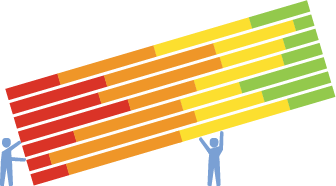What is atrioventricular nodal re-entry tachycardia?
Atrioventricular Nodal re-entry tachycardia is a type of supraventricular tachycardia which originates somewhere above the ventricles. It is caused by abnormal circuitry in the heart, that creates a loop of overlapping signals. These signals can lead to a fast heart rate.
How do members experience atrioventricular nodal re-entry tachycardia?
Top 5 symptoms reported by people with atrioventricular nodal re-entry tachycardia*
*Reports may be affected by other conditions and/or medication side effects. We ask about general symptoms (anxious mood, depressed mood, fatigue, pain, and stress) regardless of condition.
Top treatments taken by people for atrioventricular nodal re-entry tachycardia*
Who has atrioventricular nodal re-entry tachycardia on PatientsLikeMe?
| Age | Proportion | # of patients |
|---|---|---|
| <20 | 0 | |
| 20s | 0 | |
| 30s | 2 | |
| 40s | 3 | |
| 50s | 6 | |
| 60s | 0 | |
| 70+ | 1 |
Distribution of sex
| Sex | Proportion | # of patients |
|---|---|---|
| Male | 3 | |
| Female | 9 |
